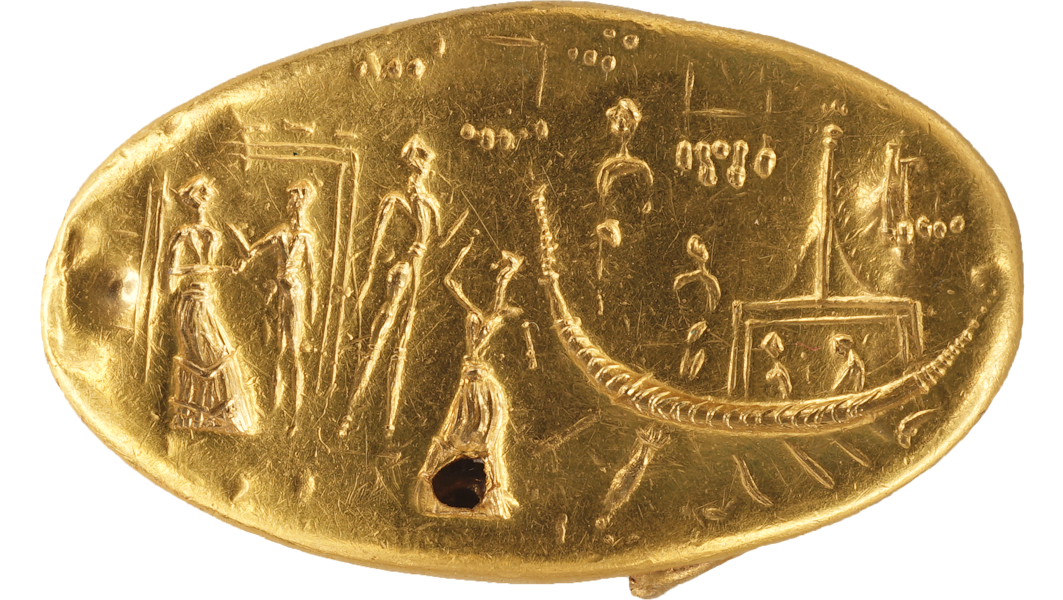Exhibit of the month
The separation of the lovers
Gold signet ring
National Archaeological Museum
Collection of Prehistoric Antiquities, inv. no P 6209
Provenance: The “Tiryns Hoard”, Tiryns, Argolid
Dimensions: Diam. of hoop: 1.9 cm.; bezel: 2 x 3.4 cm.
Date: 16th-15th c. BC
Display: Exhibition of Prehistoric Antiquities, Gallery 4, Showcase M28
Art in the Mycenaean period (1600-1100 BC) did not intentionally illustrate scenes from daily life, but rather focused on instants and symbols from the realm of religion. Men and women are shown either participating in a variety of rituals or in large processions carrying votive offerings to deities. With the exception of an evasive smile, mainly on the figures depicted on wall paintings, any other expression of emotion was deliberately omitted, whereas scenes that insinuate a sense of affection are only encountered on signet rings, between animals and their babies.
Love, which at the same time prevails in the art of neighbouring Egypt and the great kingdoms of the East, is seemingly absent. This is what makes this ring from Tiryns of particular importance, the scene of which is composed of two couples, the first shown at the entrance of a building and the second on a beach, as indicated by the rocks and the oared vessel.
The representation has been interpreted as mythological, judging by its narrative character and the depiction of the ship with the high stern and the cabin that resembles the famous “Flotilla Frieze” fresco from Acroteri, Thera, dated to the 16th c. BC. The couple, possibly the same portrayed in two successive moments in time, has been identified among others, with Theseus and Ariadne during their escape to Athens, following the slaying of the horrendous Minotaur.
It could also be a plain farewell scene of men that go to battle, similar to that captured several centuries later on the Warrior Crater from Mycenae. The figures are shown dressed in garments typical of the time; the women wear the long, pleated skirt and the men are clad in the Minoan loincloth (“zoma”), whereas swords and spears are hung by their waist.
The close relationship between the couple on the left is “betrayed” by their gestures which nonetheless are not visible to the naked eye: the woman embraces the man’s arm wrapping her fingers around it as though she is trying to pull him near her, while the man extends his free hand towards her face. If the rendering of the figures had not been so abstract, we could perhaps discern the sad expression on the faces of the two lovers.
The depiction of love in such a small scale by the artist, in a deliberately concealed manner, reminds us of its constant presence, even in times when it is not traceable in archaeology.
Dr Eleni Konstantinidi-Syvridi
Bibliography:
Sakellariou A., 1964 Die minoischen und mykenischen Siegel des Nationalmuseums in Athen. Berlin: Gebrüder Mann. CMS I, 180.


